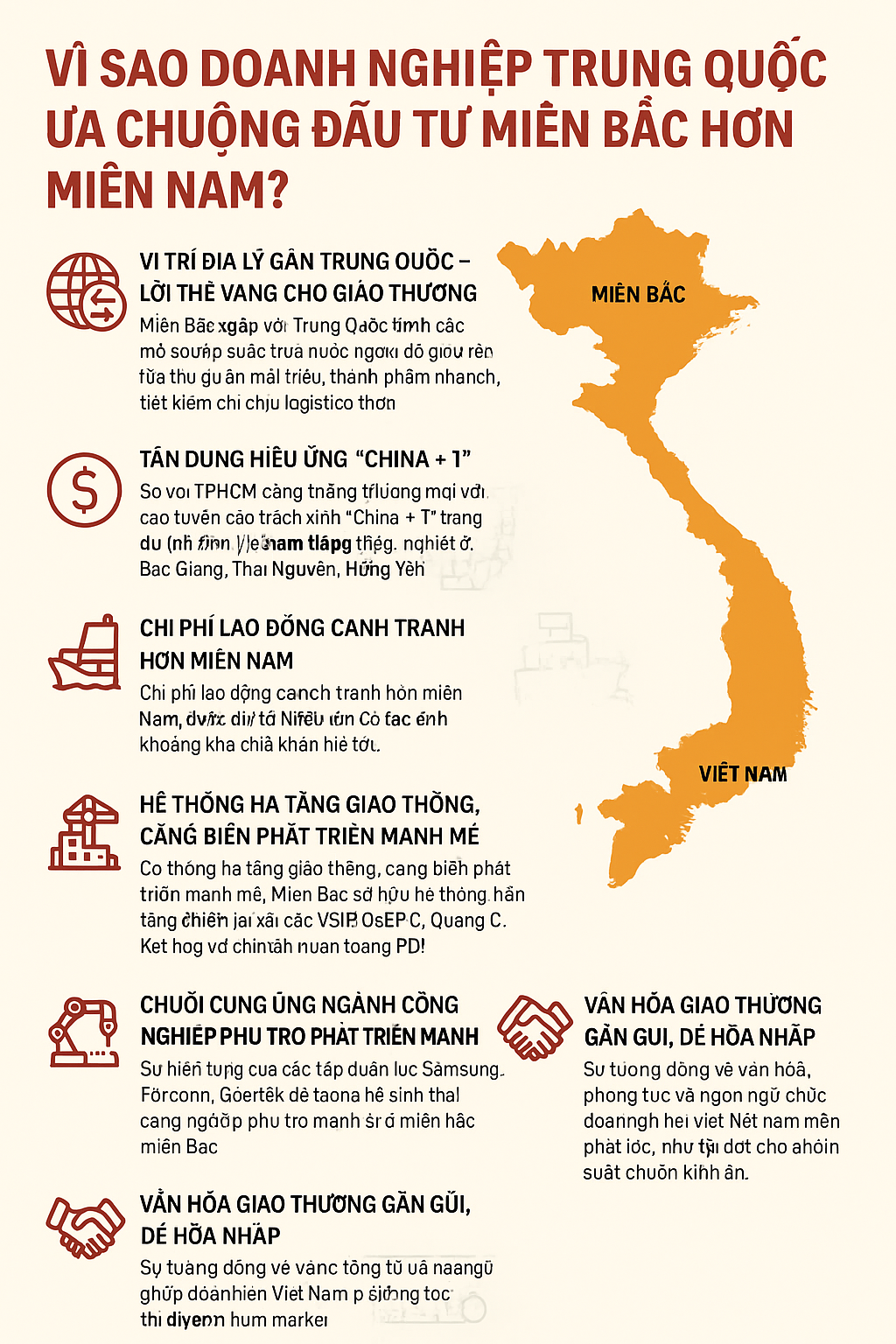Why Do Chinese Businesses Prefer to Invest in Northern Vietnam Over the South
Discover 7 reasons why Chinese companies are flocking to Northern Vietnam, from geographical advantages and competitive labor costs to advanced logistics infrastructure.
1. Geographical Proximity to China – A Golden Advantage for Trade
Northern Vietnam borders China via major border gates such as Lang Son, Quang Ninh, and Lao Cai. This makes it easier for Chinese businesses to transport raw materials and finished products quickly and cost-effectively, while also allowing better management and control over production activities.
2. Leveraging the “China + 1” Strategy
Amid trade tensions and tax policies, Chinese enterprises are expanding production abroad to reduce risks. Northern Vietnam, with its close proximity, becomes an ideal choice for maintaining a stable supply chain and meeting global export standards.
3. More Competitive Labor Costs Than the South
Compared to Ho Chi Minh City and Southeastern provinces, labor costs in the North are lower, especially in provinces like Bac Giang, Thai Nguyen, and Hung Yen. This significantly helps businesses save on operating expenses.
4. Strong Development of Transportation and Port Infrastructure
The North boasts modern infrastructure with expressways connecting border gates, international ports like Hai Phong and Cai Lan (Quang Ninh), and Noi Bai International Airport. This greatly facilitates import-export and fast goods transportation.
5. Concentrated Industrial Parks and Attractive FDI Incentives
Provinces such as Bac Ninh, Bac Giang, Hai Phong, and Quang Ninh continuously expand modern industrial parks like VSIP, DEEP C, and Quang Chau. Along with flexible investment incentives and fast legal support, Chinese companies have many favorable opportunities for development.
6. Rapid Development of Supporting Industries Supply Chains
The presence of major corporations like Samsung, Foxconn, and Goertek has created a strong supporting industries ecosystem in the North. This encourages many Chinese suppliers to relocate their factories closer to strategic partners.
7. Cultural Similarities and Easy Market Integration
Cultural, traditional, and language similarities make it easier for Chinese businesses to integrate and develop in the Northern market. Many localities also have Chinese-speaking labor, providing excellent support for production and business operations.
Conclusion:
Northern Vietnam is becoming a “magnet” for Chinese investment thanks to its geographical advantages, competitive costs, infrastructure, and attractive policies. This also presents great opportunities for Vietnamese enterprises to develop partnerships and enhance competitiveness in the global supply chain.



